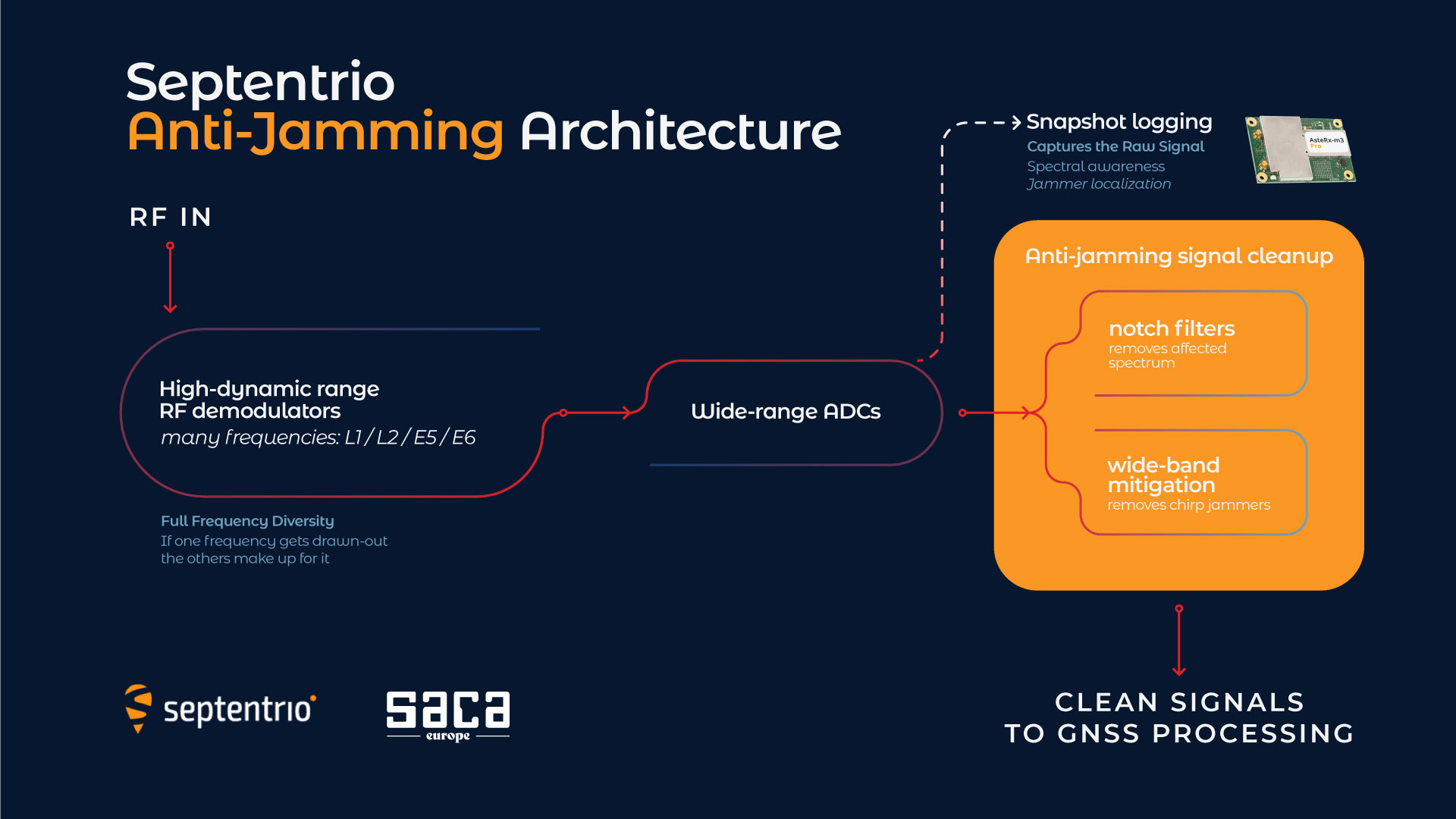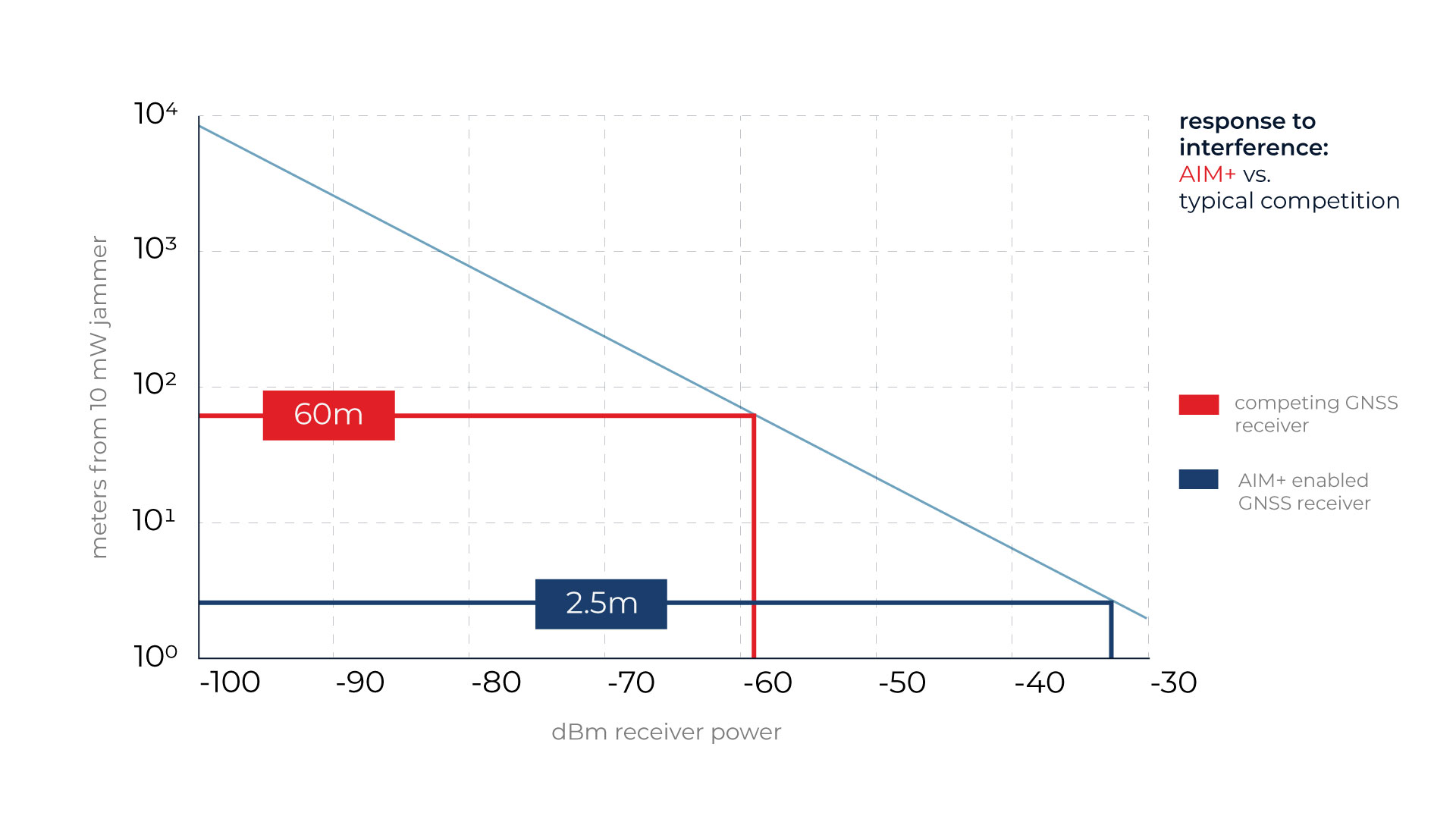Ensuring Reliable GNSS Operations with AIM+ Technology
Regarding network security, a new threat is becoming increasingly noticeable; jamming is deliberate interference or disruption of communication signals, GNSS. The GNSS is a general term describing all satellite systems enabling navigation, positioning, and timing services, and its interference occurs if GNSS signals are overcome by radio signals on similar or the same frequencies.
This interference may cause a loss of RTK (Real-Time-Kinematic: a highly accurate triangulation technique that determines and corrects location) and reduced accuracy of PVT (Positioning, Velocity, and Timing).
The GNSS Market
Modern and common uses of GNSS include smartphones, ATMs, and delivery drones.
High-technology applications include:
– Centimeter/millimeter-level accuracy for construction, precision agriculture, and autonomous vehicles.
– Dynamic applications such as marine navigation, UAVs, and robotics.
– Time-sensitive operations that require immediate feedback such as emergency response and disaster management.
– Defence and homeland security.
New developments in GNSS technology also provide cost-effectiveness by reducing setup time, increasing efficiency with faster data collection, and integrability with GNSS systems like GPS, Galileo, and GLONASS to improve their capabilities.
Anti-jamming, Approaches, and Solutions
Although wide-ranging usage areas, cost-effectiveness, and accuracy are great advantages, GNSS systems are also subject to security risks due to their possibility of being jammed, while the solution is still largely in the hands of professionals.
Anti-jamming is a collection of measures developed to counteract or mitigate the effects of jamming on communication and navigation systems.
Approaches
1. Hardware: Involves physical barriers for filtering and shielding against jamming signals, high-gain directional antennas, multi-frequency GNSS receivers, and core protection IP mechanisms.
2. Software: Uses adaptive filtering algorithms and waveform modulation techniques to identify, filter, and modify jamming noise.
3. External Verification: Systems monitor ground-based and satellite signals to detect and mitigate jamming using signal integrity and pattern recognition.
Solutions
As is the goal of anti-jamming technologies, Septentrio produces advanced GNSS technologies, focusing on reliable and accurate positioning, bringing anti-jamming elements into inner technology.
The built-in AIM+ (Advanced Interference Monitoring and Mitigation) technology ensures the reliability and resistance of Septentrio’s GPS/GNSS receivers.
By detecting and neutralizing GNSS interference, including narrow-band and wide-band types like jamming, as well as minimizing setup time and downtime, AIM+ technology enables secure operations.
AIM+ is also resistant to spoofing (manipulating data to mislead the receiver); advanced GNSS signal generators distinguish non-authentic signals even with realistic power levels and navigation data.

The AsterX-m3-Pro by Septentrio is a compact, high-performance, ultra-low-power GNSS receiver designed for demanding applications needing minimal power and space. It features advanced multi-frequency, multi-constellation GNSS technology, and anti-jamming algorithms, ensuring high reliability and availability.
Specifically tailored for rover applications, it offers easy integration for kinematic tasks requiring accurate positioning. Available in single or dual antenna mode, it provides precise heading and pitch or heading and roll information.
AIM+ technology has proven market-leading durability. AIM+ has been tested by the US Department of Homeland Security (DHS) in conflict zones and near contested borders under frequent jamming attacks and confirmed to be effective. The AsterX-m3-Pro GNSS receiver has built-in AIM+ technology that provides built-in resistance against intentional or unintentional jamming and spoofing using sampling and mitigation mechanisms, making it suitable for such defence events.

Always on maximum performance in challenging environments, the AsterX-m3-Pro includes:
– LOCK+ to adjust parameters automatically never to lose position.
– IONO+ to protect against ionospheric disturbances.
– APME+ to efficiently disentangle direct and reflected signals to increase measurement quality.
– “RxTools” control and analysis software offers an intuitive web interface for easy integration, configuration, monitoring, and data logging.
Equipped with the latest technology, Septentrio has been developing solutions in high-performance GPS/GNSS receivers for challenging environments, eliminating GNSS-related vulnerabilities for over two decades.